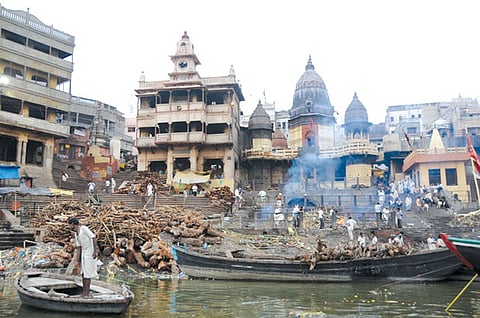On Faith and Filth
The cover of Dirty, Sacred Rivers shows buffaloes breasting through muddy water, an arresting overhead view that takes a familiar sight and makes one appreciate it anew. The cover image and handsome production of the book lead one to expect that the contents will also bring fresh insight to the muddied, turbulent waterscapes of Southasia. Travelling the entire length of the Ganga, studying the river from a variety of angles, would Cheryl Colopy live up to the promise of providing an acutely analysed and eloquently written account of the Subcontinent's water problems?
When writing this review, I remembered one of my own encounters with a dirty, sacred river in the city where I live: the Yamuna. At the Jamna Bazar ghat in Delhi, I watched as a man stood in a boat midstream, flinging grainy pellets of food into the water with thousands of birds swooping down to pick them up and fly away. As he moored the boat, the man told me that these black-headed gulls had come from Siberia. He fed them every morning and evening in winter, spending three thousand rupees a day. For him, the Yamuna provided a place for fulfilling the religious obligation to feed itinerants and for expressing a love for lesser creatures.

